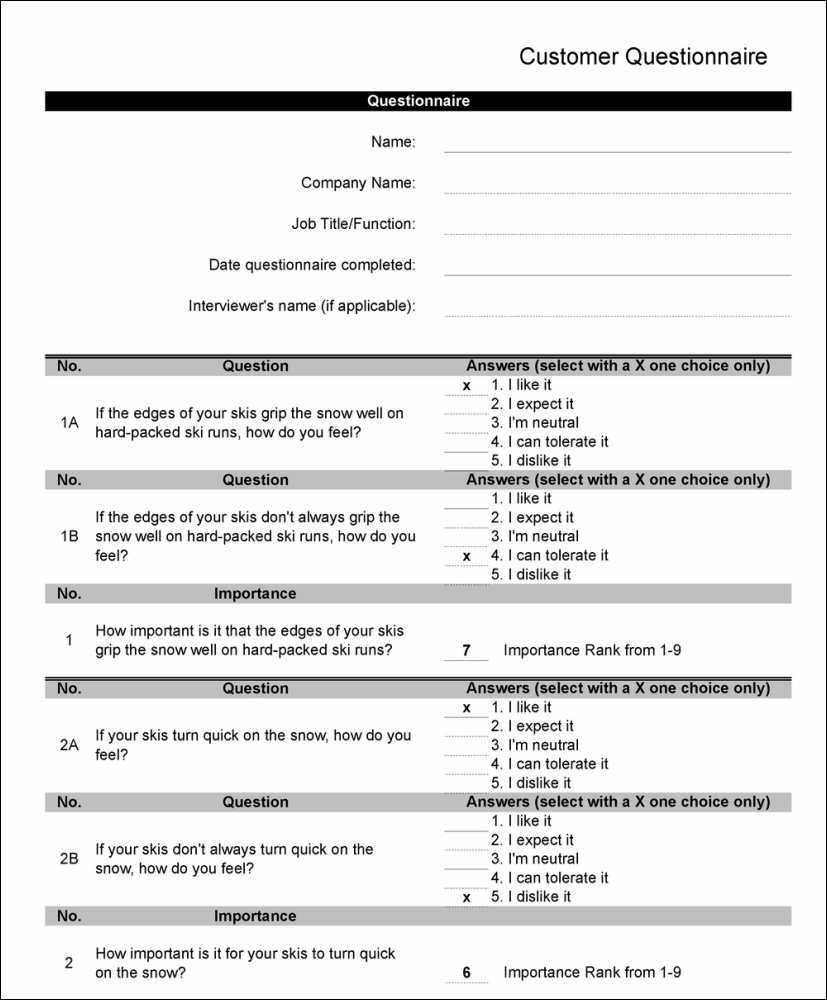Now that you understand the Kano model and the Kano questionnaire, no doubt you are asking: how does this tool relate to the VoC work we have done thus far, and how would one incorporate the Kano model into a VoC program?
As you may have already guessed, we can easily leverage the output of our requirements from the process we discussed in Chapter 7, Understanding the Customer's Voice and use it as a basis for our Kano survey. Before we do that, however, we must decide how we will administer our survey. As would be expected, the preferable method for administering a Kano survey is by conducting additional customer interviews—either by going back to the customers we interviewed previously, engaging with different customers, or a combination of the two. If that is not an option due to budget constraints, you can also send out a mail or email survey to your customer base. As you can imagine from our previous discussions on surveys, there are advantages and disadvantages to going down this route. The advantages are you can question a large number of people at a relatively small expense. The disadvantages are the response rate will likely be very small, no additional "discovery" will occur during the process, and there is no opportunity to explain any questions the customer may have.
To create the Kano survey, we will take the customer requirements we identified at the end of Chapter 7, Understanding the Customer's Voice and construct functional and dysfunctional questions for each of the features identified, just as we did for the downhill ski requirements earlier in this chapter. In Figure 8.15, we see what a typical questionnaire might look like.
As important and revealing as the Kano model is, it only shows the extent of customer satisfaction or dissatisfaction when features or requirements are met or not met, but does not show the importance in terms of the value the user or customer attaches to the product requirements or features. Satisfaction and importance are not the same. While satisfaction deals with the performance of the requirements, importance has to do with the expected perceived value of the requirements.
For this reason, in this example, in addition to asking functional and dysfunctional questions, we also ask the customer to rank the individual requirement or feature to determine the relative importance of each feature. Notice that we ask all three questions before moving to the next topic:

Figure 8.15
